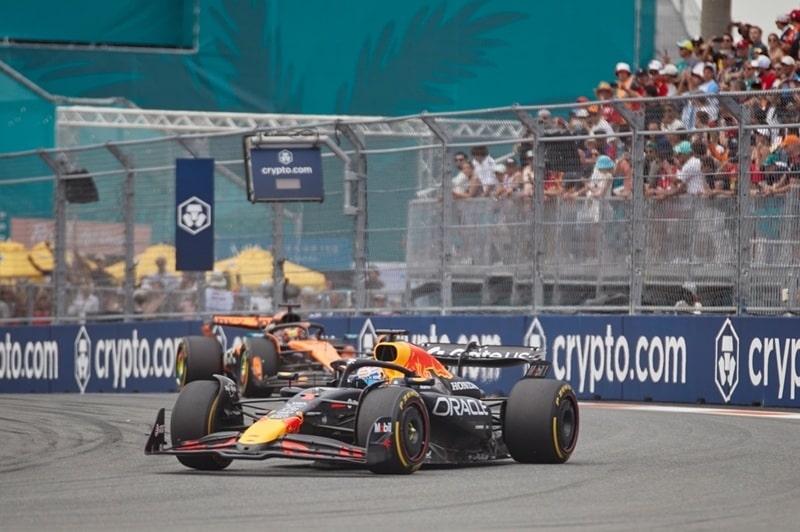F1 Safety Car: Exploring The Vital Role Of The Guardians

The Formula 1 safety car plays a crucial role in races and is commonly visible in the event of a track incident or collision. There are two types of safety cars: a physical car on the track and a virtual safety car (VSC). The physical car is utilized to control car speeds, allowing for the retrieval of damaged vehicles or the removal of debris from the track. This maneuver also has the effect of compacting the field, injecting additional excitement into the race and significantly influencing team race strategies. The primary objective of the safety car in F1 is to enforce a reduction in on-track speeds until a situation, such as recovering a stranded car or clearing debris, is resolved.
Function of Safety Car
In Formula 1, the safety car is a tangible vehicle introduced onto the track to regulate the speed of cars. It maintains a specific speed, enabling track marshals to safely attend to the retrieval of damaged cars or removal of debris. The reduced speed of the safety car leads to a clustering of the lead drivers behind it, with overtaking only permitted when explicitly instructed. Additionally, the safety car can be deployed during the formation lap in wet weather conditions to prevent accidents. When the safety car is in operation, yellow flags are displayed, and large illuminated 'SC' screens indicate the need for drivers to slow down. Once incidents are resolved, the safety car returns to the pitlane at the end of the lap, and drivers receive the signal to resume racing at the start of the next lap.
The safety car made its debut in Formula 1 at the 1973 Canadian Grand Prix. Initially brought onto the track due to adverse weather conditions causing multiple incidents, the first use of the safety car sparked controversy as it positioned itself in front of the wrong competitor, leading to confusion and a delayed determination of the race winner. The safety car was officially introduced in 1993 after trials at the French and British Grands Prix in 1992. Since its implementation, the safety car has undergone various model changes, initially varying by location and later standardized with a Mercedes-Benz in 1996. In 2021, Aston Martin assumed safety car duties.
Virtual Safety Car
The virtual safety car (VSC) differs from its physical counterpart as it does not bring an actual car onto the track. Instead, it imposes a set time during which drivers must adhere to a specified speed. Unlike the regular safety car, the VSC does not bunch up the field, maintaining consistent gaps between drivers. Race directors deploy the VSC when they determine that recovery work can be conducted at a reduced pace. Drivers receive visual cues such as yellow flags and illuminated 'VSC' signs around the track. Each driver's steering wheel displays a delta time, indicating their proximity to the VSC time. The delta reduces lap pace to approximately 30-40% of normal race speed, and overtaking is prohibited. The virtual safety car was introduced in 2015 following the tragic incident involving Jules Bianchi at the 2014 Japanese Grand Prix, with inspiration drawn from the 'Slow Zone' system used in the Le Mans 24 Hours.
Safety Car Models, Drivers, and Rules
The 2023 F1 season features two alternating safety cars: the Mercedes-AMG GT Black Series and the Aston Martin Vantage. The Mercedes-AMG GT Black Series boasts 730bhp, allowing for top speeds of 202mph, while the Aston Martin Vantage, slightly less powerful at 528bhp, achieves top speeds of 195mph. Since the year 2000, Bernd Maylander has been the designated driver of the F1 safety car, leading over 700 laps in the series. A 52-year-old German driver with a background in DTM racing and a second-place finish in the 1999 Le Mans 24 Hours, Maylander is accompanied by a co-driver responsible for operational and communication support. Both drivers are required to remain in the safety car for the entire race, ready to respond promptly if necessary.
The FIA revised the F1 safety car rules at the end of 2021 following the contentious restart at the Abu Dhabi Grand Prix. Previously, only the lapped cars between Max Verstappen and Lewis Hamilton were allowed to overtake the safety car in that race, leading to a rule change. As of 2023, all lapped cars must pass the safety car before a race restart. Additionally, regulations dictate that drivers maintain a full car length behind the car in front to prevent erratic maneuvers that may endanger others or impede the restart.
Difference Between F1 Safety Car and Medical Car
In Formula 1, the safety car and the medical car serve distinct roles. The FIA medical car, driven by Alan van der Merwe and featuring an Aston Martin DBX707 or a Mercedes-AMG C 63 S, responds to on-track accidents to ensure the safety and health of drivers. Equipped with an FIA-certified doctor, typically Dr. Ian Roberts, the medical car is not as fast as the safety car but carries essential medical equipment to aid injured drivers. Unlike the safety car, the medical car completes at least one lap at the start of all grands prix, lining up behind the drivers during the opening lap to be closer to the scene in case of an incident.
Looking Ahead
The Formula 1 safety car stands as a pivotal element in the intricate dance of speed, strategy, and safety that defines each Grand Prix. From its introduction in 1973 to the current 2023 season, the safety car has evolved not only in form and function but also in response to the ever-changing dynamics of the sport as Formula One expands. As we explored its models, drivers, and rules, it became evident that the safety car's role extends beyond merely regulating speeds; it influences race outcomes, shapes team strategies, and ensures the well-being of drivers.
This content was created by AI




